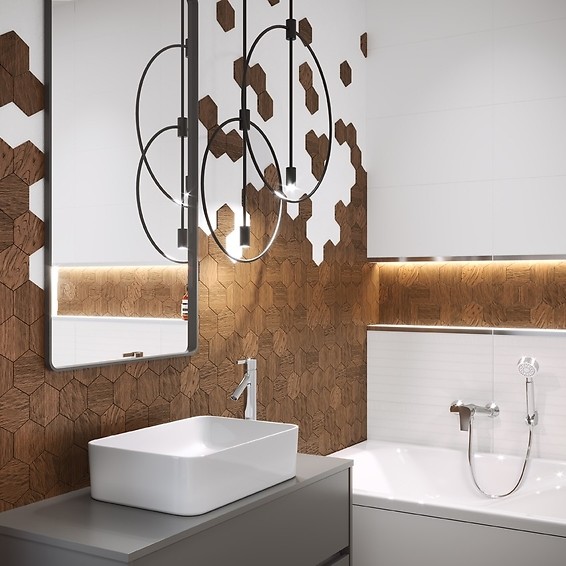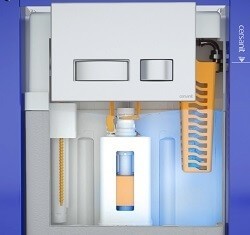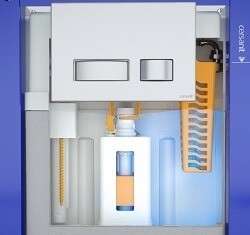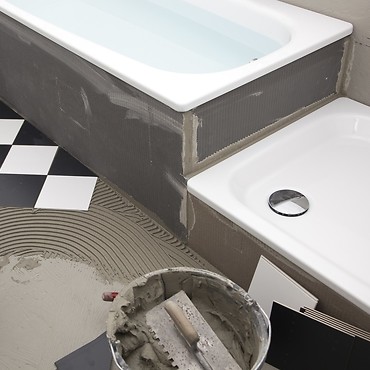How do you calculate the number of tiles to purchase?
How do you calculate the number of tiles to purchase?

Once you have chosen the perfect collection of ceramic tiles and you can already see the finished bathroom with the eyes of your imagination, it is time to do the shopping. But how do you calculate the number of tiles that you need so that you do not end up buying too few or too many? It is simpler than you might think.
When estimating the number of tiles, you have to consider several aspects. First of all, the dimensions of the bathroom, but also the dimensions and shape of the tiles, the pattern of their arrangement (classic or diamond) and whether you are planning to install decorative elements such as strips. Bit first things first.
Calculate the area
First, check the dimensions of the room. To calculate the surface area to be covered with tiles, you have to measure the width and length of the floor, as well as the width and height of the walls. If you do not want to lay the tiles up to the ceiling, but only to a certain level, for example, just above the bathtub or washbasin - only take this height into account. Then multiply the length by the width (separately for the floor and walls). Deduct the windows and door area. In this way, you will get the number of square metres that you need to round up and increase by at least 10-15 percent. In the case of smaller interiors - you should add more and in the case of bigger ones - less.
The small number of extra tiles is necessary due to the cuttings, during which the tiles may crumble and break, as well as possible errors that will have to be made up for. The purchase of additional tiles at a later date may prove to be problematic, or even impossible. The new batches can have a slightly different colour and may not match the previously purchased tiles perfectly. It is not uncommon for manufacturers to terminate the production of a particular collection.
Check the tiles
When calculating the demand for tiles, you also have to take their shape into account. Square or rectangular tiles require less cutting. Those with more fancy shapes such as, e.g. the hexagonal mosaic from the Lovely White collection, are likely to lead to more offcuts when laying (that's why you should buy more), but they will provide a stunning effect. You need a larger number of extra tiles if you want to arrange tiles in diamond or herringbone pattern, fewer in the case of a classic, even pattern.
If you intend to introduce decorative elements such as the shiny metal strips from the TOUCH ME collection, you have to calculate their exact number. In the case of strips, it is simple - if you want them on each wall in the form of a straight line - measure the length of all walls and divide it by the length of a single strip. The surface area of decorative elements - plinths, strips and décors can be subtracted from the total surface area of the basic tiles.
And what if you are dreaming of a multi-coloured wall or a fancy pattern? In this case, it is… best to carefully draw the bathroom on a piece of paper. Knowing its dimensions, mark each metre as two boxes. Then draw the tiles to appropriate scale. In this way, you can easily calculate how many tiles of each type you will need. This method is also ideal for large tiles, in the case of which you must know their exact number.
See more tips in this category
-
FRESH SYSTEM - a guarantee of freshness
The WC concealed systems with the FRESH SYSTEM feature a dedicated container for toilet fresheners. The ... -
QUICK FIX - universal mounting brackets
The new AQUA WC concealed systems are equipped with very handy QUICK FIX wall brackets for easy ... -
Bathtub installation — the most common mistakes and how to ...
The bathtub is usually the central point of the bathroom. The place that is associated not only with ...







